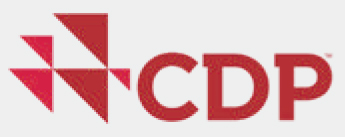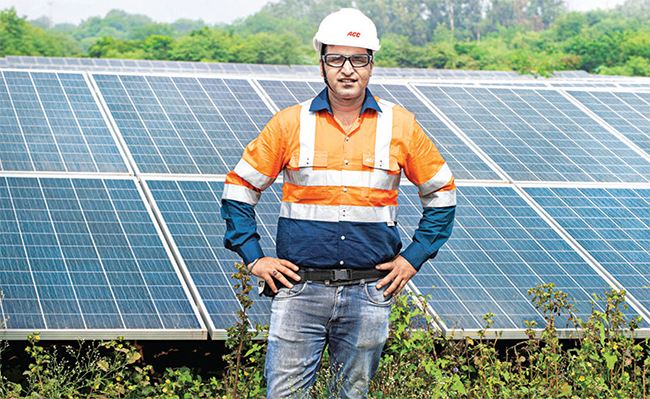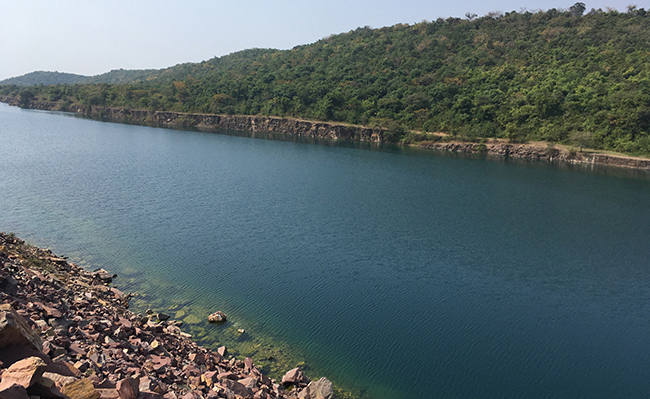
PILLAR 1
Climate and energy
We have taken the Net Zero pledge and our emission reduction targets are validated by the Science Based Target initiative (SBTi). We aim at reducing our Scope 1 emissions by 21.3% and Scope 2 emissions by 48.4% by 2030, considering a 2018 baseline.
Levers that drive our climate change mitigation strategy
CLINKER SUBSTITUTION RATE / CLINKER FACTOR
Replacing the clinker with alternative blending materials like pozzolana, slag or fly ash (industrial waste) to produce blended cements, reduces the carbon intensity of the cement. This is the primary lever for reduction of carbon emissions.
In 2021, approximately 91% of our total cement portfolio consisted of blended cements, and this will be enhanced in the future.
WASTE-DERIVED FUELS AND BIOMASS
Using waste and low-carbon fuels as a replacement for fossil fuels that have traditionally been used to fire a cement kiln.
In 2021, we used 0.28 MT of waste-derived fuels and biomass.
ENERGY EFFICIENCY
Optimising our thermal and electrical energy efficiency in both kilns and captive power plants helps reduce carbon intensity and production costs. Various energy optimisation measures are implemented.
In 2021, our specific thermal energy and specific electrical energy intensity was 3,108 MJ/T of clinker and 78.55 kWh/T of cement.
RENEWABLE ENERGY AND WASTE HEAT RECOVERY SYSTEM (WHRS)
Renewable energy sources include three wind farms with total installed capacity of 19 MW, 82 MWp of solar power capacity and a 7.5 MW WHRS at the Gagal plant. Planned additions to our renewable energy portfolio include WHRS for cement kilns at Wadi, Kymore and Chanda Cement works, solar power plants within plant boundaries, and long-term solar Power Purchase Agreements (PPAs).
In 2021, our RE production (excluding energy from WHRS) was 102 Million units as compared to 85.27 Million units in 2020.
ADOPTION OF NEW TECHNOLOGIES
For upcoming projects, we are adopting state-of-the-art technological interventions, innovative production techniques and climate-resilient resource optimisation measures.
As a part of our commitment to Net Zero, we are in the process of adding 38.7 MW of WHRS.
CARBON PRICE
The cement industry pays indirect carbon taxes in the form of coal cess, Perform Achieve and Trade (PAT) scheme and Renewable Purchase Obligation (RPO) scheme. After calculating the impact of these three indirect carbon taxes under different scenarios, we can arrive at a carbon price.
Based on current market trends, our Internal Carbon price stands at ~`3,753 per Tonne of CO2.

CDP disclosure and rating
Since 2006, ACC has been measuring its carbon emissions as per the World Business Council for Sustainable Development - Cement Sustainability Initiative (WBCSD-CSI) standards and the CSI protocol. Moreover, for almost a decade, ACC has disclosed its climate related data through CDP’s environmental disclosure platform.
A
2021 Score for CDP Climate Change
B
2021 Score for CDP Water Security

ACC Limited wins Climate Action Programme (CAP 2.0°) Award from CII
CAP 2.0° recognises our efforts to reduce CO2 emissions from our operations. The CAP 2.0° award given by Confederation of Indian Industry (CII) is based on a CII-climate-maturity model and uses the principles of business excellence. ACC has won this award in the Energy, Mining and Heavy Manufacturing sector category for efforts in 2019. The award ceremony was held in 2021 because of delay caused by the pandemic. The award recognises the Company's continued focus on climate action, on building a circular economy, and conserving resources and nature.

